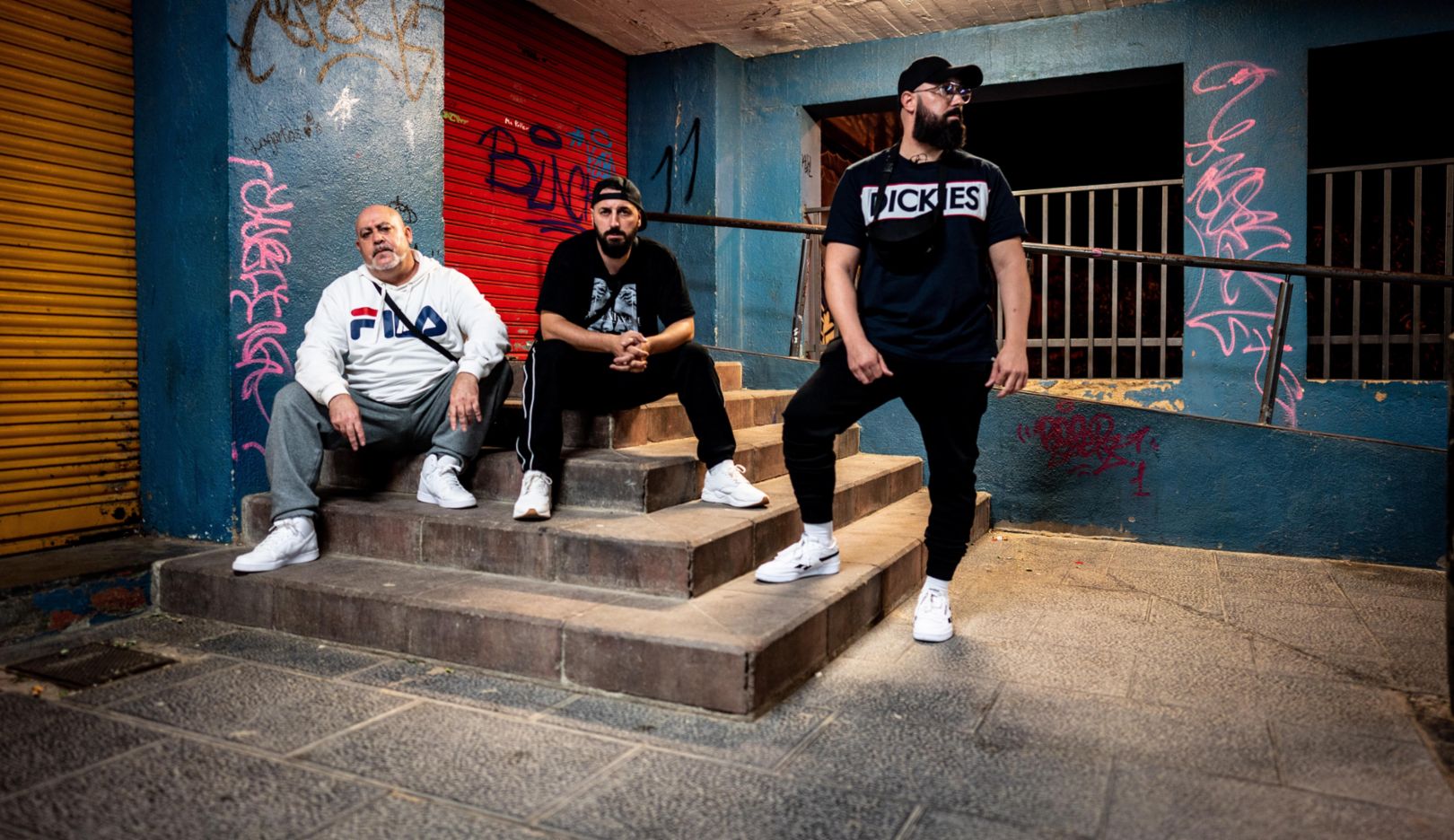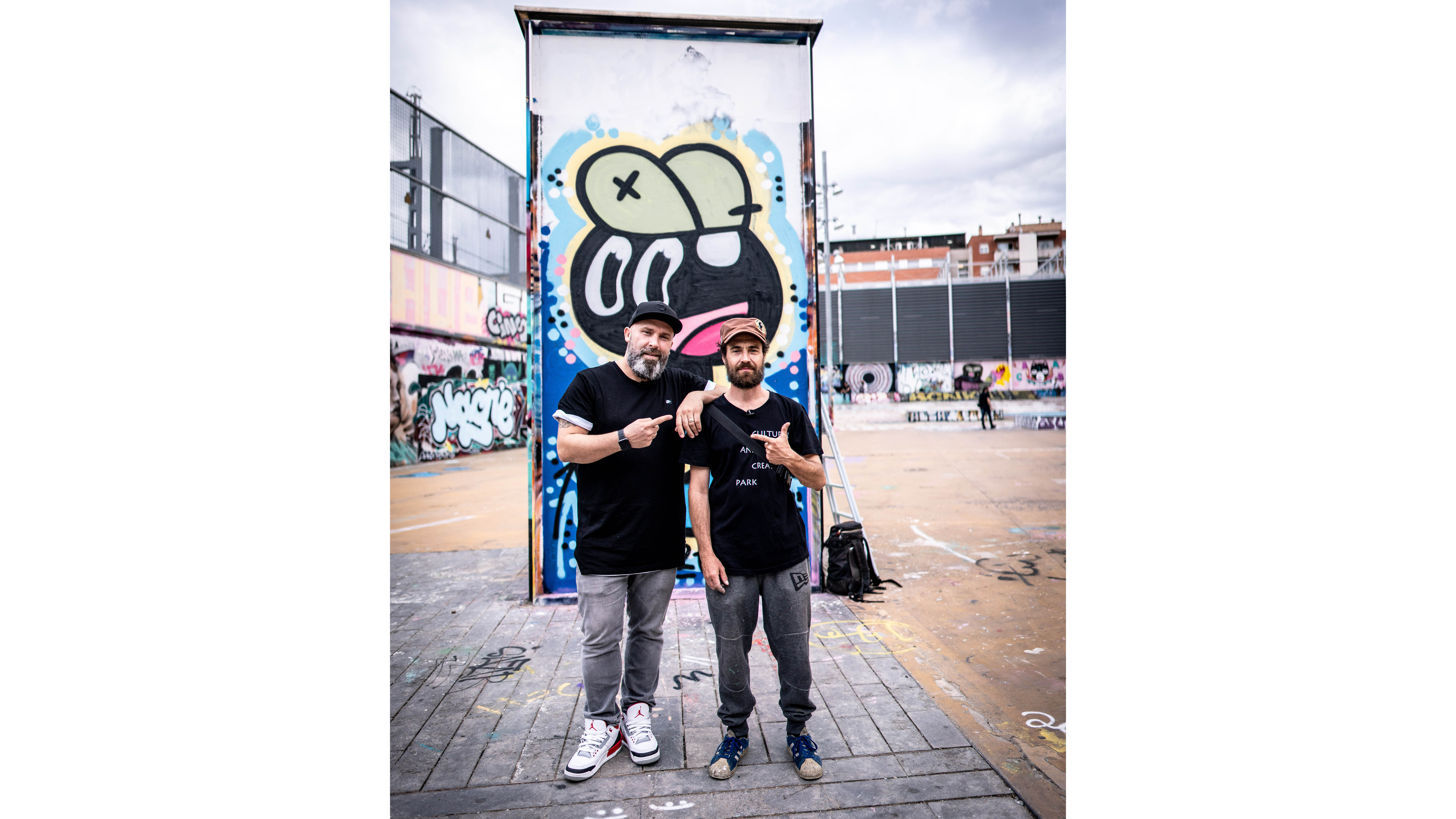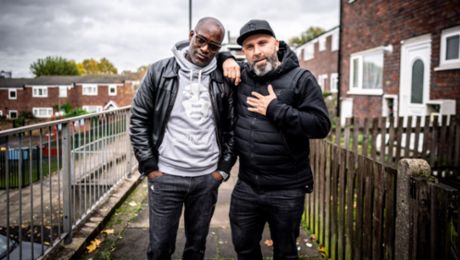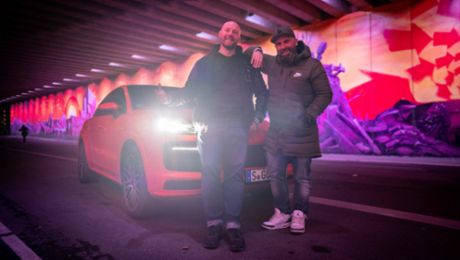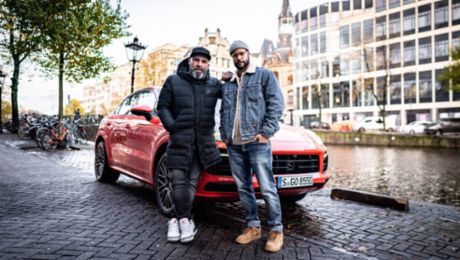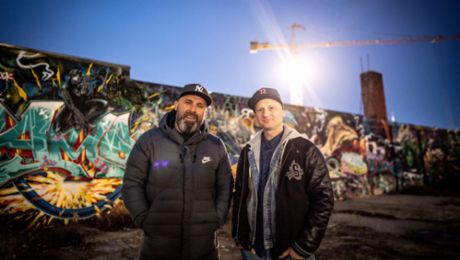Thanks to its location on the Mediterranean Sea and the architectural monuments that are known beyond its borders Barcelona is one of Europe's most popular travel destinations. Sights like La Sagrada Família or Gaudí's Casa Batlló attract tourists, but the capital of Catalonia also has another side to explore.
Rap from the streets, beats against domestic violence
"Welcome to our dirty cellar." This is how El Santo welcomes me at Placa Le Termes. Falsalarma, consisting of the MCs David & Ángel Navarro Romero (aka El Santo & Titó), DJ Neas and Dycache Santiago, is originally from Sabadell, an industrial town northwest of Barcelona. The four artists have a deep connection to this place. Not only because their first studio lies one floor beneath us in the basement.
"This is where our first tracks were made. We recorded ‘Alquimia’ here in 2005 - our second album, which went through the roof shortly afterwards." The songs of the Spanish artists deal, among other things, with the resistance against domestic violence. A topic that was particularly widespread in their neighborhood.
@backtotape Starting from the bottom, Falsalarma rapped their way up in Barcelona’s hip-hop scene🔝##back2tape ##porsche ##hiphop ##legends ##rap ##allthewayup ##fyp
♬ Originalton - backtotape
Different paths, one common goal
As strongly as the four hip-hoppers define themselves as Falsalarma today, their individual paths were just as different."We've tried our hand at everything and sharpened our profile over time. Be it with battles in tagging, skating or breakdancing. At some point, I started writing lyrics and rhymes. Then, I did some scratching, then worked on lyrics again. Just like a baby starts to walk," Titò says. "My friends went crazy. At some point everyone said, 'Man, you've got to do that full-time - it's really great," Tito remembers.
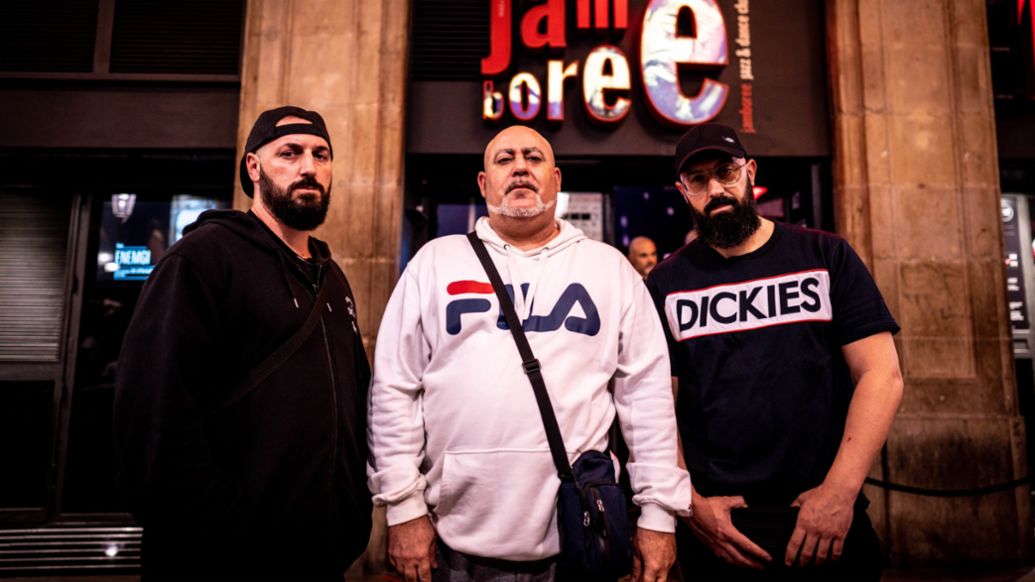
His crew member DJ Neas still remembers very well how he discovered breakdancing: "That was in primary school, probably back in 1993. Somewhere a couple of guys set up a rectangular parquet floor, turned on the boombox and started dancing. It still hits me today." One thing is clear to everyone: whether breakdancing, tagging or graffiti, each form itself is a dialogue with the street. A dialogue that doesn’t care where you come from. As long as you do it with passion.
My second guest shares this passion: El Xupet Negre.
Trademark: A black pacifier
The black pacifier belongs to Barcelona as Lionel Messi belongs to the green grass of Camp Nou. At least for all those who keep their eyes open when strolling through the streets of the Spanish coastal city, and are fascinated by graffiti and urban art. The symbol first appeared in 1987, designed by the graphic designer El Xupet Negre.

Long before hip-hop became an impactful youth culture in Spain, the Spanish artist was on the move with felt markers and spray cans. Rather as a punk, than as an artist he says himself today. "It wasn't that easy back then to live out a certain extent of art. Most of what was somehow different was banned." The graffiti pioneer was already enthusiastic about the art of painting at a young age. Friends who admired his drawings advised him to develop his own logo. When he painted the black pacifier for the first time in public, he was immediately caught by the Guardia Civil: "The city cracked down hard these days and imposed fines.
Today, El Xupet Negre is one of the 50 most influential street artists in the world. In his own shop, he sells swimsuits, hoodies, caps, t-shirts, but also wooden works - and paints on behalf of the government.
Twelve kilometers of concrete as a symbol of freedom for graffiti
With the 2012 parliamentary elections in Catalonia, the situation for free street art in Barcelona changed. A piece of autonomy returned. El Xupet Negre was inspired by family, art history, graphic design, brand logos, street signs and Pop Art and paints walls that are officially made available to him by the city of Barcelona. "There used to be perhaps 2,000 graffiti artists in Barcelona, but today there are almost 20,000," Xupet says. "On a specially created website, every sprayer can register and reserve a piece of wall." In total, the city provides a length of more than twelve kilometers for every form of graffiti.
For "Back 2 Tape" El Xupet Negre even offers a free piece of a concrete wall. In the middle of the renowned residential area El Poble-Sec, there is a piece of freedom for the city's young people: a skater and graffiti paradise, on which a specially created Back 2 Tape lettering is now displayed next to El Xupet Negre's famous black pacifier. When Xupet puts away the spray can and looks up at the sunny Spanish sky, he says: "You know, Niko - today's Mozart wouldn't play the piano, he would scratch vinyl. And Leonardo da Vinci would not paint on a normal canvas but on concrete walls."
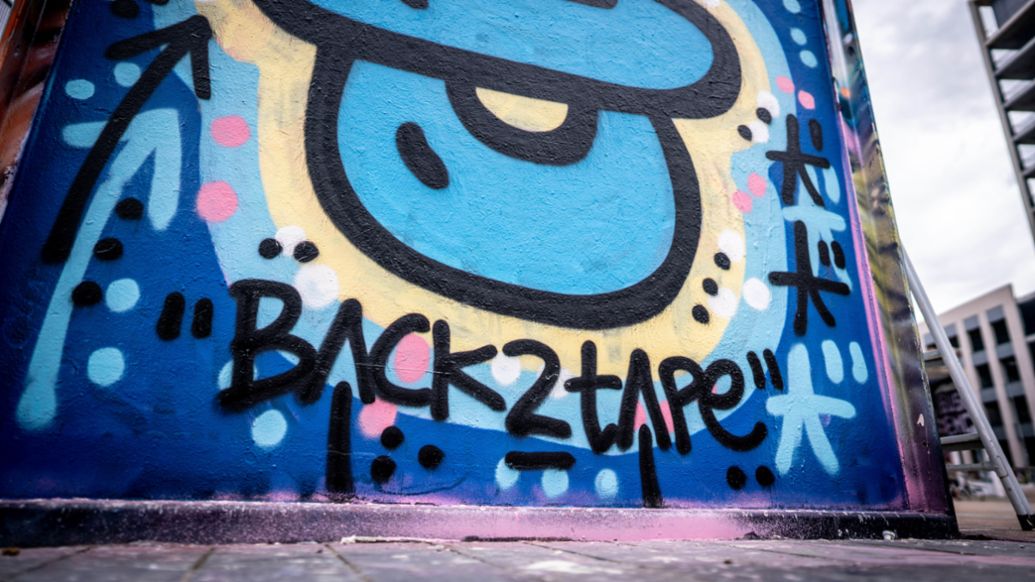
Back 2 Tape
In 2018, music journalist Niko Hüls embarked on a journey to the roots of hip-hop in Germany in "Back to Tape". Now, he’s continuing his road trip across Europe in a Porsche Cayenne S Coupé. In cooperation with the hip-hop magazine Backspin.de, the Porsche Newsroom project "Back to Tape" sheds light on cultural influences through the four central elements of hip-hop: rap, DJing, breakdance and graffiti. In Part 5, Niko Hüls visits Barcelona.
Official playlist of Back 2 Tape
An important note
Niko’s road trip through Europe was produced before the outbreak of COVID-19. Porsche, Backspin and the involved artists are aware of their social responsibility and advise against such a trip at this time out of consideration for the health and well-being of all people.
Info
Text: Niko Hüls
Photos: Markus Schwer
